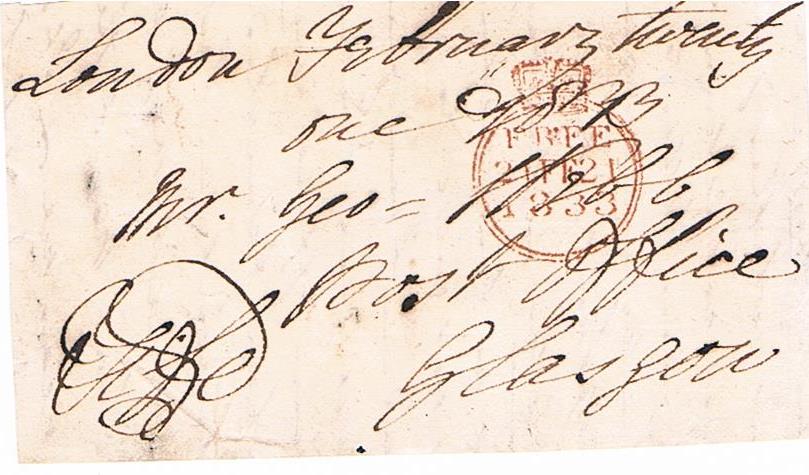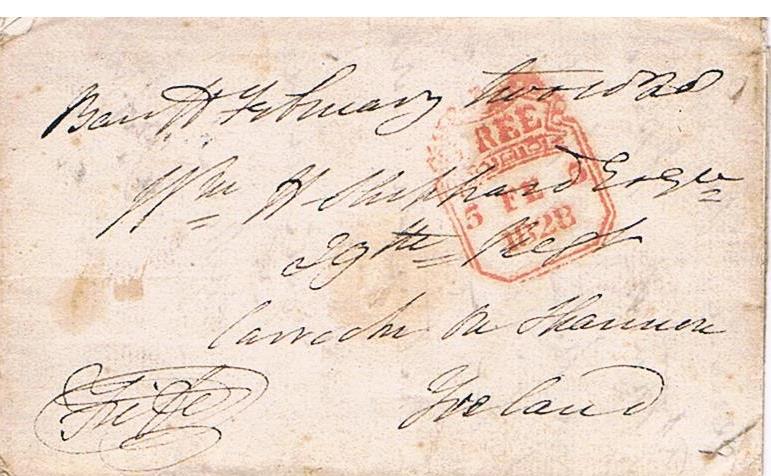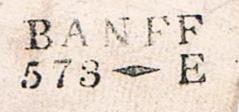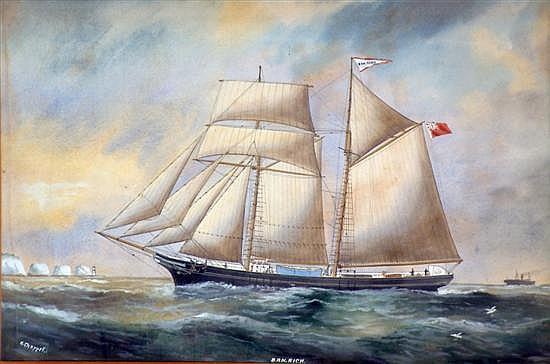Not a rallying cry but a privilege given to Members of Parliament and those that sit in the House of Lords. The title “Earl Fife” was an Irish title and did not entitle the holder to sit in the House of Lords, and hence at various times the Earls Fife were Members of Parliament for Banffshire, or even Elginshire. At other times, the Earls Fife were given a UK title; for example James the 4th Earl was made Baron Fife in 1827 until his death in 1857, and so could sit in the House of Lords.
James the 2nd Earl was a particularly prolific letter writer and the Free Frank became a great cost saving to him. Technically free postage was only for correspondence pertaining to parliamentary or constituency affairs, but it was widely abused. All that was needed was the signature of the sender in the lower left hand corner of the address face; the date and place of origin was also meant to be shown.
That may not seem of particular importance these days, but prior to the postal reforms introduced by Rowland Hill in 1840, the high cost of sending a letter was dependent on both the distance it had to travel, the route it took and the number of sheets of paper; the charge could be paid by either the sender or the recipient. For example, in 1830 it would have cost the equivalent of £4.32 to send a single sheet letter to an address 100 miles distant. Letters were generally folded pieces of paper, as if an envelope was used it counted as an extra sheet and thus cost twice as much! There were many other complications too, whether it went via a capital city or cross country, disparities about how many miles between places, and at that time even what a mile was (England was 1,760 yards; but a Scots mile was 1,976 yards, and although that was phased out early in the eighteenth century, the Irish mile of 2,240 yards applied until 1839, hence would have included the second example below!).
James the 4th Earl similarly had the same Free Frank privilege. This example was sent from London on 21 February 1833 and is addressed to Mr Geo. Gibb, Bank Office, Glasgow.

Address from letter sent by 4th Earl Fife in February 1833 to Glasgow
Such mail could be keenly collected when disposed of, trying to once again abuse the Free Frank system. Hence the trend was often to retain only the address part of the letter and to discard the rest, so the content of this particular letter is unknown.
This second example, fortunately complete although difficult to read, is also signed by the 4th Earl Fife but this time when he was in residence in Duff House, Banff. It is dated 1st February 1828 and addressed to a Mr W Sheppard Esq, 29 Regiment, at an address in Ireland. What is particularly interesting about the letter content, is that it wasn’t written by the Earl, but is a short message to the addressee from his father, A. Sheppard.

Address from letter sent from Banff in Feb 1828 to Ireland
The Free Frank system continued until the postal reforms introduced in 1840 – when stamps much as we know them today were introduced; just 1d per half ounce to anywhere in the country. The parliamentary privilege was then changed to a set value of pre-printed postage; today that stands at £7,000 per year, although looking at the list, very few MP’s use that much. An MSP can currently claim up to £5,500.


